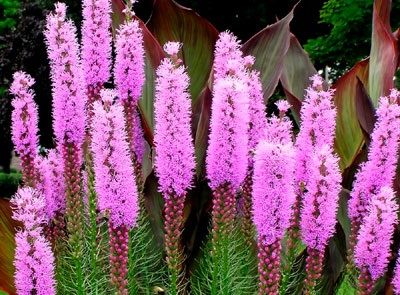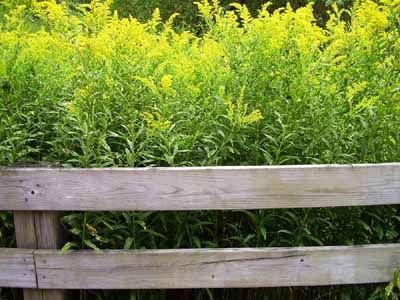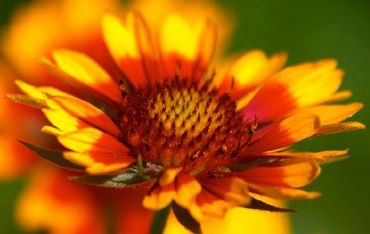
By definition, a perennial, like these liatris above, is a plant that lives longer than two years. It blooms in the spring and summer, and then it dies again every fall and winter. Then again in the spring, the blooms come out to greet the warmth and sunshine. Learn all about the colorful world of perennials in this image gallery. Next up, is a flower well known in natural medicine.
Advertisement

Purple coneflower, also known as echinacea, is a heat-tolerant flower, a native perennial that grows wild from Ohio to Iowa and south to Louisiana and Georgia. Long used for infectious diseases and poor immune function, echinacea extractions also are used today to help treat influenza, colds, chronic fatigue syndrome, and AIDS. Find a hybrid perennial next.

The Shasta daisy, Chrysanthemum maximum (Asteraceae), is allegedly named the Shasta daisy because it made Luther Burbank, the man that created this hybrid, think of the white snow on Mount Shasta in California. The next flower blooms in pink, blue, lilac, purple to brown, yellow, orange, almost black and white.

The diverse iris genus contains more than 200 distinct species and countless cultivars. Many types of iris have fine foliage, whether short or tall, which is a good thing, because the flowers have only a brief period of bloom. These perennials return reliably year after year. In 1991, this next plant took home the honor of "Perennial Plant of the Year" by the Perennial Plant Association (PPA).

Coral Bell (Heuchera) is a plant that does well in shade. Its spikes of flowers can be bright red, pink or white, but for most gardeners, this plant's real beauty lies in its stunning foliage of silver, burgundy, bronze, plum and gold. Do you like butter? This next perennial can tell you so.
Advertisement

Years ago, creeping buttercups were held by children under their noses to test their fondness for butter. Originally from Europe, they are now naturalized over much of the Northeast. The genus is named from the Latin for "little frog," an allusion to the aquatic habitat of some species. Next up are some of the world's most popular spring bulb flowers.

Although tulips are associated with Holland, they actually are not native there; tulips descend mostly from species originating in the Middle East. Tulips typically bear cup-shaped flowers in almost every shade but true blue. This next perennial is considered to be one of the most popular garden flowers.

You will probably know one dianthus right off the bat: carnations. Carnations are affordable bouquets at the local florist, but they also make for hardy perennials right in your own yard. The next perennial has suffered from bad press due to the mistaken belief that it causes hay fever.

Like their weedy ancestors, garden goldenrods are not fussy about mediocre soil and irregular watering. The perennial thrives in soil with poor to average fertility, in fact, and require little water and no fertilizer. To promote flowering, however, sun exposure is an absolute must. Check out the metallic-blue perennial next.

The globe thistle is prickly to the touch, but striking and beautiful to the eye. They require full sun for strong growth but are not fussy about soil. Once established, they are very drought-resistant. The next perennial is a must for any romantic.
Advertisement

Bleeding hearts, the poetically named perennials, have heart-shaped pendant pink or white flowers with spurs at the base and fernlike attractive foliage. Dicentra spectabilis is the showiest, but its flowers finish in spring and its foliage disappears in midsummer. The next perennial comes in a seemingly infinite combination of size, shape and color.

Astilbe (False Spirea) is a sturdy plant that needs very little to thrive. Astilbe is known to attract butterflies, a welcome addition to most gardens since they can help pollinate and add even more color. Looking for a yellow or orange perennial? Find one next.

Yellow and red gaillardias, or blanket flowers, are daisies with serrated tips on the ray petals. These perennials are very tough and cheerful. The next perennial is known for its ability to attract hummingbirds.

Columnar perennials with large, bell-shaped flowers opening from bottom to top, foxgloves are garden classics that bloom at about the same time as roses. Size varies with growing conditions and plant species, but many grow four to six feet tall, with flowers two to three inches long. The next flower is excellent in garden borders and for mass plantings.

The botanical name of this perennial flower refers to the Greek hero, Achilles, who is said to have used yarrow to heal wounds. Yarrows grow between one and three feet high, blooming from June until frost. The next perennial has been found in the ruins of ancient Egypt and is often referenced in folklore.
Advertisement

Moving with the breeze, perennial poppy flowers with crinkly, silky petals on graceful stalks four feet tall are a focal point in any garden. The blooming period, though brief, is an important garden event, for each flower measures four inches across. The next perennial bears large, many-petaled, showy flowers.

Tremendously cold, hardy and phenomenally long-lived, peonies are the queens of many perennial borders. Their glossy dark foliage frames flowers that can be huge, and many are fragrant, too. Whether white, pink, deep rose or a combination of colors, peonies bloom dependably year after year. The next perennial bears fragrant 5-petaled white or pink blossoms.

Soapwort, or bouncing bet, is a European immigrant that has now naturalized over much of North America. Soapwort was brought over by the colonists to be used as a soap substitute. When bruised or boiled in water, the leaves produce a lather with detergent properties that even removes grease. The next flower blooms, matures, and withers within 24 hours.

The good thing about daylilies is that there are several buds on one stalk, so the fact that each bloom lasts only one day isn't as obvious, because a new bloom quickly replaces those that disappear. Local Hawaiian women wear this next flower as a marker of marriage status.

Many associate the hibiscus with exotic locales, such as Hawaii, where the flower is not only decorative but also purposeful. Females wear the flower behind their left ears to signify marriage and behind their right ears if they are still single. Deadheading and frequent division keep the next perennial going strong.
Advertisement

Several coreopsis species are perennials popular in the garden, all of them sporting bright daisylike flowers on wiry stems. Height varies with species and cultivar, ranging between nine inches and three feet. The next flower's name was given to it in recognition of the strength of its stems.

Butterflies love the nectar of the New York Ironweed and will frequent any garden with plenty of these flowers. Each branch bears a grouping of deep violet flowers in a cluster of about 30 to 50. These beautiful blooms will show up in late July or early August and can last as late as the end of October. The final perennial is the state flower of Colorado.

Columbine, the perfect perennial for cut flowers, grows in a rainbow of colors and is a hummingbird favorite. To learn more about perennial flowers, check out the Perennials Channel.